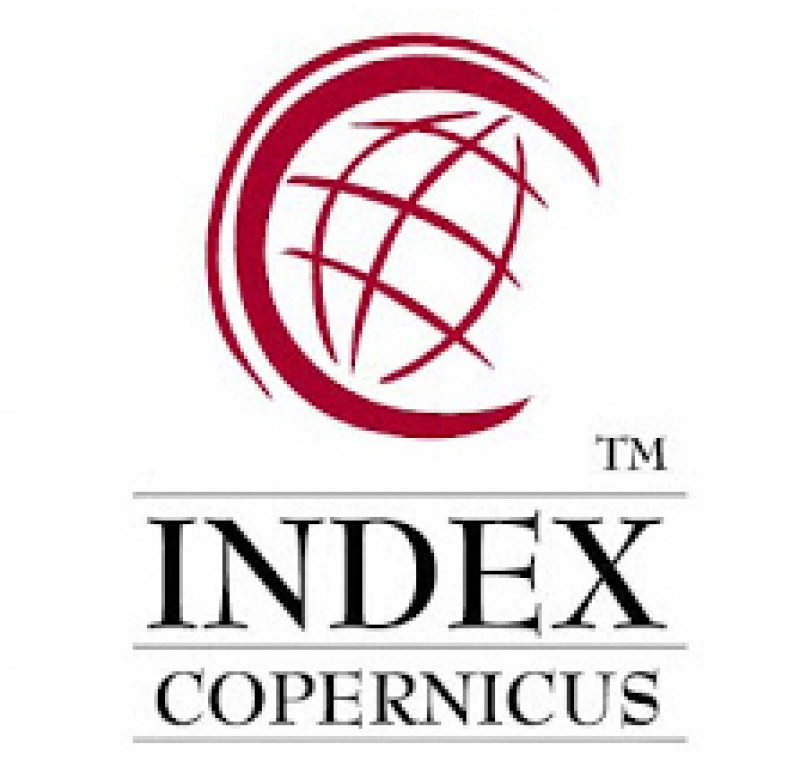Investigation of the Use of Titanium Dioxide Nanoparticles in Solar Cells
Abstract
Today, nanoparticles have attracted the attention of many researchers due to their special properties as well as their many technological applications. Among these, titanium dioxide nanoparticles have many important applications in various industries due to their excellent optical, electrical and catalytic properties. These applications include use in industrial pigments, as photocatalysts in environmental cleansing, in sunscreens to protect the skin, in photovoltaic applications for solar cells, sensors, in electronic device components, and many more. Two important properties of this material that make it very efficient and useful in life are its photocatalytic and superhydrophobic properties. These two properties are used to purify water and wastewater, eliminate air pollution and buildings, accelerate photochemical reactions such as hydrogen production, fabricate surfaces and layers and self-cleaning glass. The properties of titanium dioxide nanoparticles are strongly dependent on the size of the doped particles, elements or compounds and the surface modifications made on them, which in turn are influenced by the nanoparticle synthesis method. For this reason, methods for the synthesis of titanium dioxide nanoparticles have received much attention today. As the size of the material gets smaller and smaller and reaches the nanoscale, new physical and chemical properties show up. Among the unique properties of nanomaterials, the motion of electrons and holes in semiconductor nanomaterials is dominated by quantum constraint, and the transfer properties of phonons and photons are strongly influenced by the size and geometry of the material. The effective surface area and surface to volume ratio increase with decreasing the material size. High effective levels are achieved by small particles, which will be useful in many 2TiO-based types of equipment in which the interaction of the common surface of the material is important.
Keywords
Full Text:
PDFReferences
Kalita, G., Umeno, M., & Tanemura, M. (2014). Blend of Silicon Nanostructures and Conducting Polymers for Solar Cells. In Nanostructured Polymer Blends (pp. 495-508). William Andrew Publishing.
Liu, J., Li, Y., Arumugam, S., Tudor, J., & Beeby, S. (2018). Investigation of low temperature processed titanium dioxide (TiO2) films for printed dye sensitized solar cells (DSSCs) for large area flexible applications. Materials Today: Proceedings, 5(5), 13846-13854.
Sacco, A., Porro, S., Lamberti, A., Gerosa, M., Castellino, M., Chiodoni, A., & Bianco, S. (2014). Investigation of transport and recombination properties in graphene/titanium dioxide nanocomposite for dye-sensitized solar cell photoanodes. Electrochimica Acta, 131, 154-159.
Fan, W., Tan, D., & Deng, W. (2011). Theoretical investigation of triphenylamine dye/titanium dioxide interface for dye-sensitized solar cells. Physical Chemistry Chemical Physics, 13(36), 16159-16167.
Hosseinnezhad, M., Gharanjig, K., Yazdi, M. K., Zarrintaj, P., Moradian, S., Saeb, M. R., & Stadler, F. J. (2020). Dye-sensitized solar cells based on natural photosensitizers: A green view from Iran. Journal of Alloys and Compounds, 828, 154329.
Yarmohamadi-Vasel, M., Modarresi-Alam, A. R., Noroozifar, M., & Hadavi, M. S. (2019). An investigation into the photovoltaic activity of a new nanocomposite of (polyaniline nanofibers)/(titanium dioxide nanoparticles) with different architectures. Synthetic Metals, 252, 50-61.
Nikoobakht, A., Aghaei, J., Fallahzadeh-Abarghouei, H., & Hemmati, R. (2019). Flexible Co-Scheduling of Integrated Electrical and Gas Energy Networks under Continuous and Discrete Uncertainties. Energy.
Badri-Koohi, B., Tavakkoli-Moghaddam, R., & Asghari, M. (2019). Optimizing Number and Locations of Alternative-Fuel Stations Using a Multi-Criteria Approach. Engineering, Technology & Applied Science Research, 9(1), 3715-3720.
Badri-Koohi, B., & Tavakkoli-Moghaddam, R. (2012, July). Determining optimal number and locations of alternative-fuel stations with a multi-criteria approach. In 8th International Industrial Engineering Conference, Tehran, Iran.
Khezri, M., & Rasmussen, K. J. R. (2019). An energy-based approach to buckling modal decomposition of thin-walled members with arbitrary cross-sections, Part 1: Derivation. Thin-Walled Structures, 138, 496-517.
Khezri, M., & Rasmussen, K. J. R. (2019). An energy-based approach to buckling modal decomposition of thin-walled members with arbitrary cross-sections, Part 2: Modified global torsion modes, examples. Thin-Walled Structures, 138, 518-531.
Khezri, M., Bradford, M. A., & Vrcelj, Z. (2015). Application of RKP‐FSM in the buckling and free vibration analysis of thin plates with abrupt thickness changes and internal supports. International Journal for Numerical Methods in Engineering, 104(2), 125-156.
Tehrani, M., Moshaei, M. H., & Sarvestani, A. S. (2017). Network polydispersity and deformation‐induced damage in filled elastomers. Macromolecular Theory and Simulations, 26(6), 1700038
Moshaei, M. H., Tehrani, M., & Sarvestani, A. (2019). On stability of specific adhesion of particles to membranes in simple shear flow. Journal of biomechanical engineering, 141(1), 011005.
Moshaei, M. H., Tehrani, M., & Sarvestani, A. (2019). Rolling adhesion of leukocytes on soft substrates: Does substrate stiffness matter?. Journal of biomechanics, 91, 32-42.
Nasr, A. K., Kashan, M. K., Maleki, A., Jafari, N., & Hashemi, H. (2020). Assessment of Barriers to Renewable Energy Development Using Stakeholders Approach. Entrepreneurship and Sustainability Issues, 7(3), 2526-2541.
Kondori, M. Esmaeilirad, A. Baskin, B. Song, J. Wei, W. Chen, et al. Identifying catalytic active sites of trimolybdenum phosphide (Mo3P) for electrochemical hydrogen evolution. Advanced Energy Materials. 9 (2019) 1900516.
Behjat, A., Jafari Nodoushan, F., Khoshroo, A., & Ghoshani, M. (2015). Study of the effect of Titanium dioxide nano particle size on efficiency of the dye-sensitized Solar cell using natural Pomegranate juice. Iranian Journal of Physics Research, 14(4), 361-367.
Ashrafi, R., Azarbayjani, M., Cox, R., Futrell, B., Glass, J., Zarrabi, A., & Amirazar, A. (2019). Assessing the Performance of UFAD System in an Office Building Located In Various Climate Zones.
Rastegarzadeh, S., Mahzoon, M., & Mohammadi, H. (2020). A novel modular designing for multi-ring flywheel rotor to optimize energy consumption in light metro trains. Energy, 206, 118092.
Kazemi, A., & Yang, S. (2019). Atomistic Study of the Effect of Magnesium Dopants on the Strength of Nanocrystalline Aluminum. JOM, 71(4), 1209-1214.
Kazemi, A. (2019). Atomistic Study of the Effect of Magnesium Dopants on Nancrystalline Aluminium (Doctoral dissertation).
Asadi-Ojaee, S. S., Mirabi, A., Rad, A. S., Movaghgharnezhad, S., & Hallajian, S. (2019). Removal of Bismuth (III) ions from water solution using a cellulose-based nanocomposite: A detailed study by DFT and experimental insights. Journal of Molecular Liquids, 295, 111723
Chegeni, M., Pour, S. K., & Dizaji, B. F. (2019). Synthesis and characterization of novel antibacterial Sol-gel derived TiO2/Zn2TiO4/Ag nanocomposite as an active agent in Sunscreens. Ceramics International, 45(18), 24413–24418. doi: 10.1016/j.ceramint.2019.08.163
Kermani, H., & Rohrbach, A. (2018). Orientation-Control of Two Plasmonically Coupled Nanoparticles in an Optical Trap. ACS Photonics, 5(11), 4660-4667.
Movaghgharnezhad, S., & Mirabi, A. (2019). Advanced Nanostructure Amplified Strategy for Voltammetric Determination of Folic Acid. Int. J. Electrochem. Sci, 14, 10956-10965.
Moghadas, B., Solouk, A., & Sadeghi, D. (2020). Development of chitosan membrane using non-toxic crosslinkers for potential wound dressing applications. Polymer Bulletin, 1-11.
Gupta, S., Singh, P., Moghadas, B., Grim, B. J., Kodibagkar, V. D., & Green, M. D. (2020). Synthesis of PEG and quaternary ammonium grafted silicone copolymers as nanoemulsifiers. ACS Applied Polymer Materials, 2(5), 1856-1864.
Kondori, A., Esmaeilirad, M., Baskin, A., Song, B., Wei, J., Chen, W., ... & Asadi, M. (2019). Identifying Catalytic Active Sites of Trimolybdenum Phosphide (Mo3P) for Electrochemical Hydrogen Evolution. Advanced Energy Materials, 9(22), 1900516.
Chegeni, M., Pour, S. K., & Dizaji, B. F. (2019). Synthesis and characterization of novel antibacterial Sol-gel derived TiO2/Zn2TiO4/Ag nanocomposite as an active agent in Sunscreens. Ceramics International, 45(18), 24413–24418. doi: 10.1016/j.ceramint.2019.08.163
Ntiribinyange, M. S. (2016). Degradation of textile wastewater using ultra-small Β-Feooh/Tio2 heterojunction structure as a visible light photocatalyst (Doctoral dissertation, Cape Peninsula University of Technology).
Mohtor, N. H., Othman, M. H. D., Bakar, S. A., Kurniawan, T. A., Dzinun, H., Norddin, M. N. A. M., & Rajis, Z. (2018). Synthesis of nanostructured titanium dioxide layer onto kaolin hollow fibre membrane via hydrothermal method for decolourisation of reactive black 5. Chemosphere, 208, 595-605.
Asemani, H., Zareanshahraki, F., & Mannari, V. (2019). Design of hybrid nonisocyanate polyurethane coatings for advanced ambient temperature curing applications. Journal of Applied Polymer Science, 136(13), 47266.
Peng, F., Cai, L., Huang, L., Yu, H., & Wang, H. (2008). Preparation of nitrogen-doped titanium dioxide with visible-light photocatalytic activity using a facile hydrothermal method. journal of Physics and Chemistry of Solids, 69(7), 1657-1664.
Kamei, M., & Mitsuhashi, T. (2000). Hydrophobic drawings on hydrophilic surfaces of single crystalline titanium dioxide: surface wettability control by mechanochemical treatment. Surface Science, 463(1), L609-L612.
Mohammadnejad, H., Liao, S., Marion, B. A., Pennell, K. D., & Abriola, L. M. (2020). Development and validation of a two-stage kinetic sorption model for polymer and surfactant transport in porous media. Environmental Science & Technology.
Hassantabar, S., Wang, Z., & Jha, N. K. (2019). SCANN: Synthesis of compact and accurate neural networks. arXiv preprint arXiv:1904.09090.
Hassantabar, S., Dai, X., & Jha, N. K. (2019). STEERAGE: Synthesis of Neural Networks Using Architecture Search and Grow-and-Prune Methods. arXiv preprint arXiv:1912.05831
Pianko-Oprych, P., Hosseini, S. M., & Jaworski, Z. (2016). Model development of integrated CPOx reformer and SOFC stack system. Polish Journal of Chemical Technology, 18(4), 41-46.
Bagheri, M., & Azmoodeh, M. (2019). Substrate Stiffness Changes Cell Rolling and Adhesion over L-selectin Coated Surface in a Viscous Shear Flow. arXiv preprint arXiv:1910.00002.
DOI: http://dx.doi.org/10.18415/ijmmu.v7i11.2166
Refbacks
- There are currently no refbacks.
Copyright (c) 2020 International Journal of Multicultural and Multireligious Understanding

This work is licensed under a Creative Commons Attribution-NonCommercial-NoDerivatives 4.0 International License.
https://ijmmu.com
editor@ijmmu.com
facebook.com/ijmmu
Copyright © 2014-2018 IJMMU. All rights reserved.



































